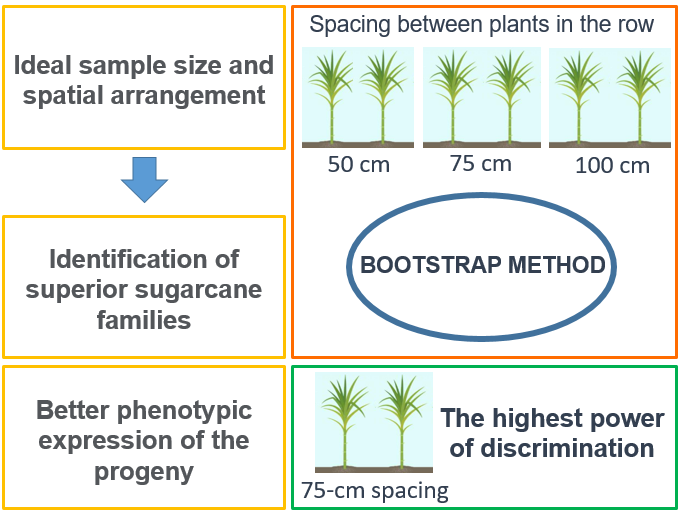Effect of plot size and plant spatial arrangement on the efficiency of family selection in sugarcane
DOI:
https://doi.org/10.48162/rev.39.033Keywords:
Plant breeding, experimental design, breeding strategy, bootstrapAbstract
The purpose of this study was to identify the ideal sample size representing a family in its potential, to identify superior families and, in parallel, determine in which spatial arrangement they may have a better accuracy in the selection of new varieties of sugarcane. For such purpose, five families of full-sibs were evaluated, each with 360 individuals, in the randomized blocks design, with three replications in three different spacing among plants in the row (50 cm, 75 cm, and 100 cm) and 150 cm between the rows. To determine the ideal sample size, as well as the better spacing for evaluation, the bootstrap method was adopted. It was observed that 100 cm spacings provided the best average for the stalk numbers, stalk diameter and for estimated weight of stalks in the stool. The spacing of 75 cm between the plants allowed a better power of discrimination among the families for all characters evaluated. At this 75 cm spacing was also possible to identify superior families with a sample of 30 plants each plot and 3 reps in the trial.
Highlights
- The bootstrap method was efficient to determine the ideal sample size, as well as the best spacing for evaluation.
- The 75-cm spacing had the highest power of discrimination among families, indicating that this spacing is the most efficient in evaluating sugarcane families for selection purposes.
- From all the results and considering selective accuracy as the guiding parameter for decision making, the highest values obtained considering the number of stalks and weight of stalks in the stools were found at the 75-cm spacing.

Downloads
Published
Issue
Section
License
Copyright (c) 2018 Revista de la Facultad de Ciencias Agrarias UNCuyo

This work is licensed under a Creative Commons Attribution-NonCommercial-ShareAlike 3.0 Unported License.
Aquellos autores/as que tengan publicaciones con esta revista, aceptan las Políticas Editoriales.


